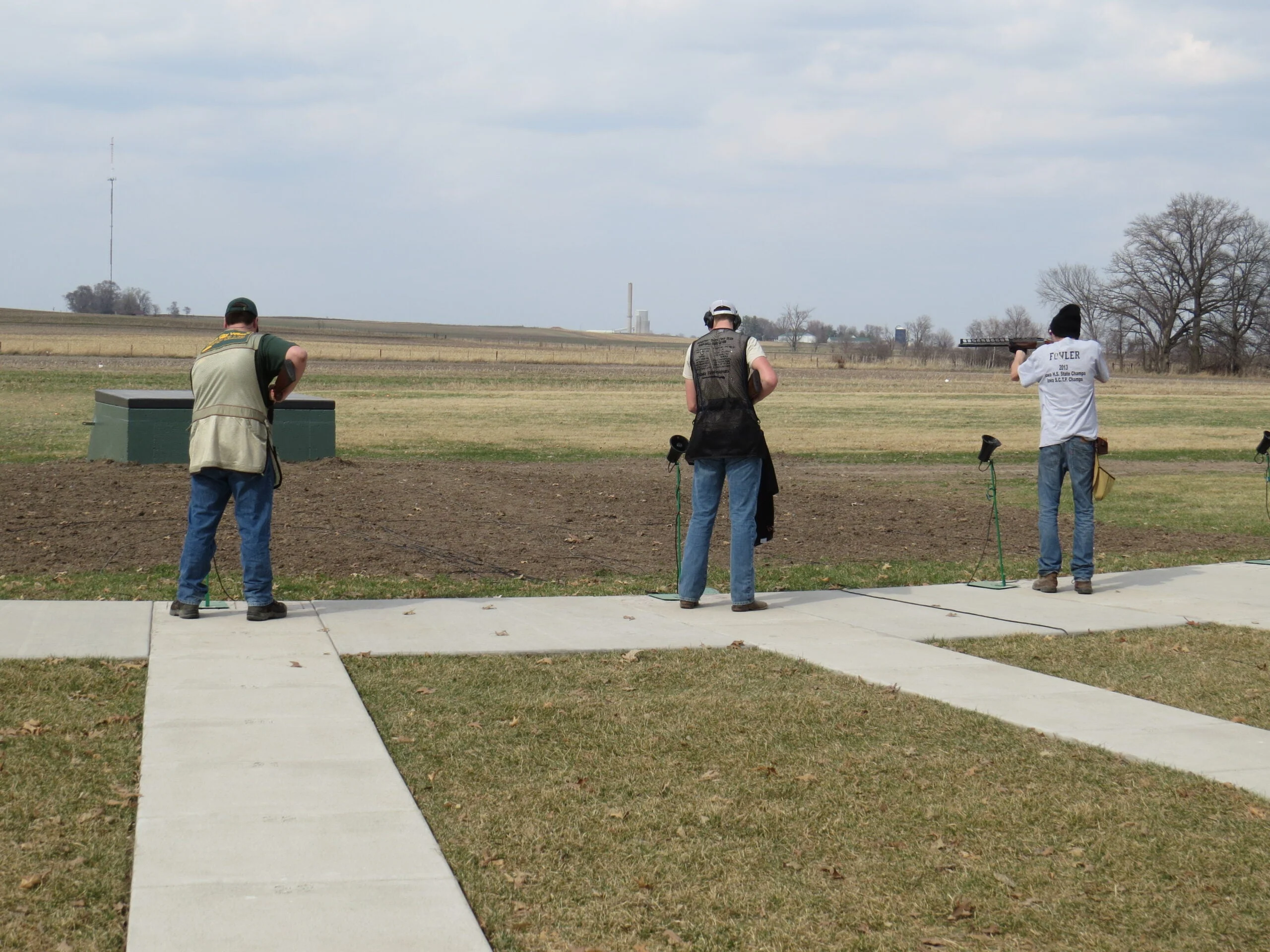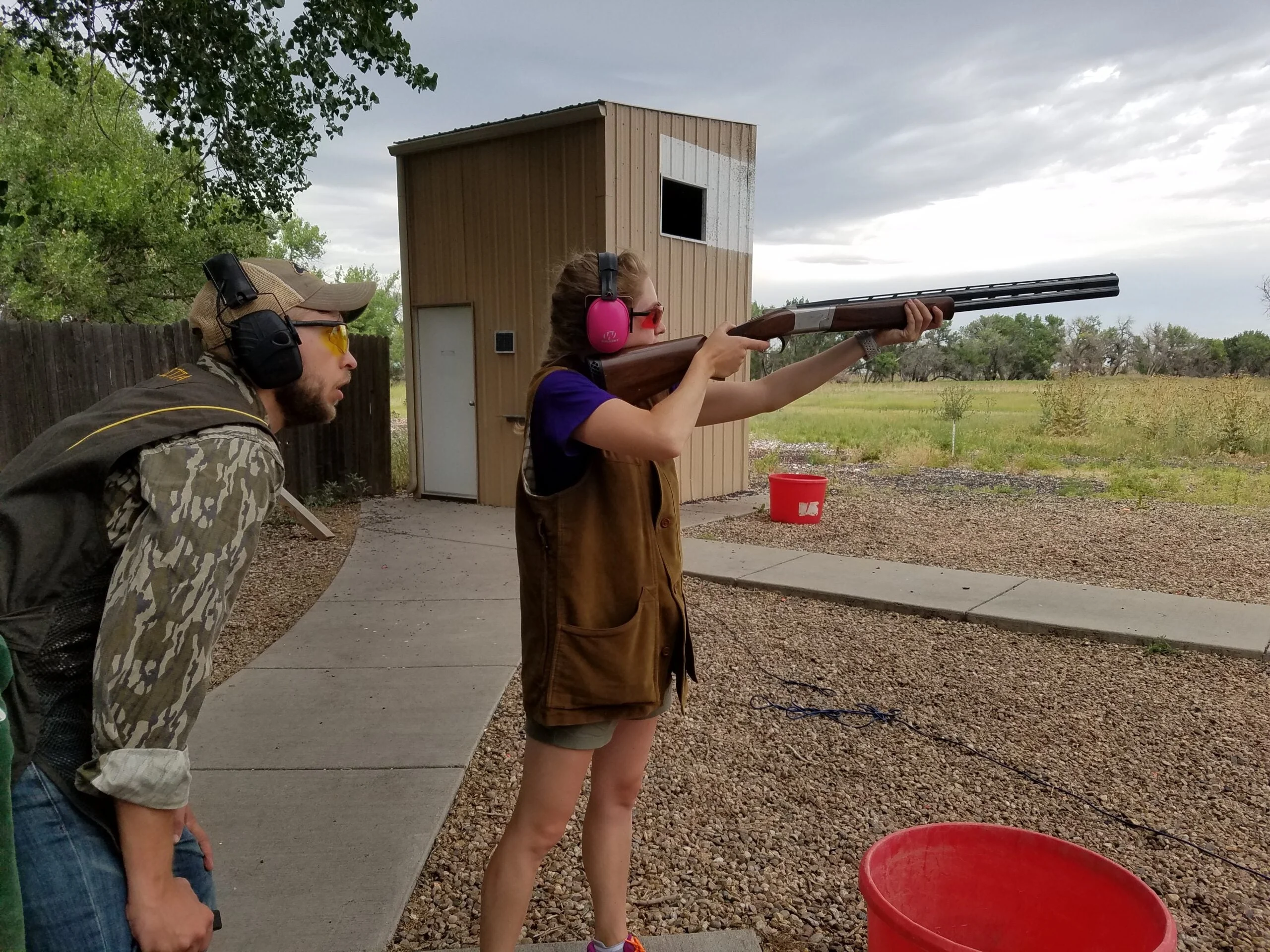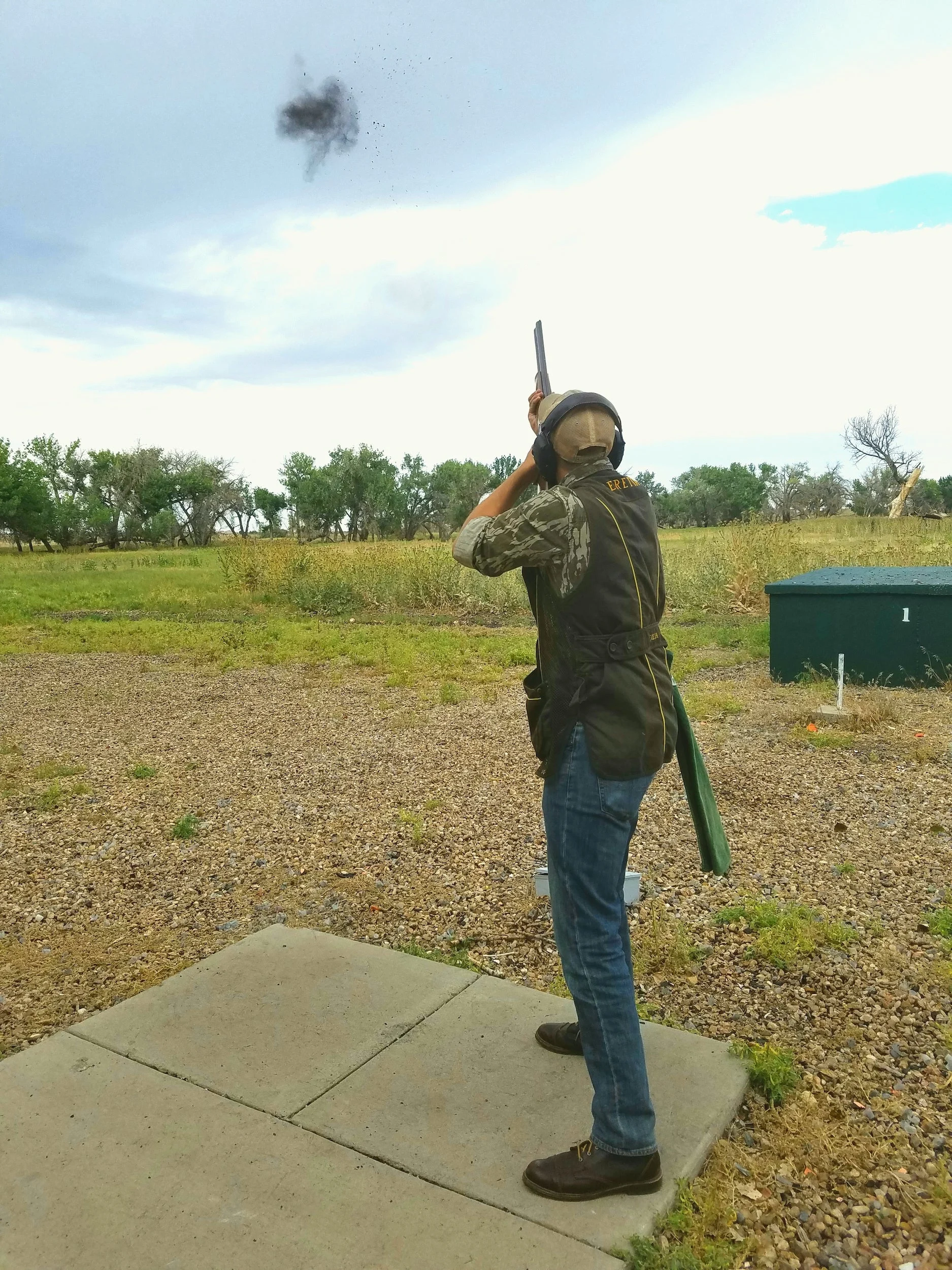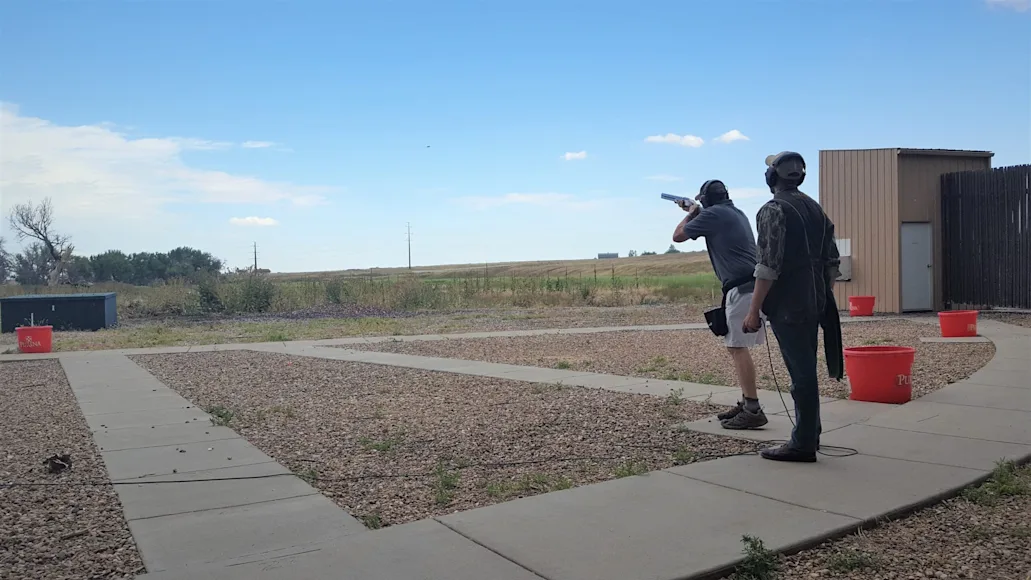_We may earn revenue from the products available on this page and participate in affiliate programs. Learn more ›
_
Trap and skeet fields can be found at gun clubs all over the country. When it comes to trap vs skeet, both games are fun, and they make great target practice. For those who choose to shoot them competitively, they become absorbing pastimes in their own right, all the way up to the Olympic level. If you go the competitive route, you can spend thousands on specialized guns
and expect to shoot tens of thousands of shells in practice and competition a year. You can also play both games recreationally, or in a local league, with a gun you already own.
A lot of shooters will say they shoot trap when they are referring to informal clay shooting with a portable trap. Many will call clay targets “skeet,” and tell you they shoot skeet, when, in fact, they do not. There’s nothing wrong, and a lot right, about informal target practice, but these people are missing out. There’s much better practice to be had on a trap or skeet field.
Trap and skeet are both competitive games with long histories, and established layouts and rules. Here’s a guide to trap vs skeet, and how each game is played.
How to Shoot Trap

Phil Bourjaily
Trap shooting evolved from live pigeon shooting
competition in the 19th century, with clay (now resin and limestone) “pigeons” substituting for real birds.
The trap field features a single machine inside a traphouse. Up to five people can shoot at once. You start at one of five posts set in an arc 16 yards behind the house, shooting single targets in turn. You shoot five targets at each post, then rotate to the next, which gives you a slightly different shooting angle. You continue until you’ve shot five targets at each post for a round of 25 targets. The machine oscillates randomly so you never know if you will be shooting at a right or left angle, or at a straightaway target when you call “pull.”
In addition to 16-yard singles, trap offers two other disciplines. In double trap, the machine throws two birds at once, for a round of 50 targets. In handicap trap, shooters stand at greater distances of up to 27 yards from the trap.
How to Shoot Skeet

Phil Bourjaily
Skeet was invented by some New Englanders in the 1920s
as a practice game for grouse hunting. Originally called “shooting round the clock” it had one trap, and shooting stations set in a circle. When the neighbors complained about pellets raining onto their property, the game’s inventors added a trap and cut the circle in half.
Skeet has two traps set in houses, one high and one low, 42 yards apart, connected by an arc of seven stations. An eighth shooting station is set halfway between the houses. Skeet shooters move around the arc, shooting single targets from each house, and shooting doubles at Stations 1, 2, 6, and 7. The targets fly on a fixed path, unlike trap targets. Two singles at each station plus doubles at four stations adds up to 24 shots. To make 25, you shoot your first miss over, or, if you don’t miss any, you shoot the last bird, Low House 8, twice. In a round of skeet, you will shoot incoming and outgoing targets and many crossing birds.
Trap vs Skeet: Guns
are all 12-gauges. They are heavy, with long barrels and tight chokes, as shots in trap are fairly long. To better hit the rising, going away targets, many trap guns are set up to shoot high. Single barrels (for 16-yard singles and handicap) are popular, as are pumps, semiautos, and O/Us that can also serve as guns for double trap.
A skeet gun has to hold two shells so you can shoot doubles as well as single targets. Competitive skeet has classes for 12-, 20-, 28-gauge, and .410. Rather than shoot four different guns, many serious skeet shooters use sub-gauge tube inserts to shoot all four gauges in one O/U. Semiautos and pumps were formerly popular skeet guns as well, although you have to be able to cycle a pump gun pretty quickly to shoot skeet doubles. Skeet guns have very open chokes, as the targets are shot at ranges from a few yards out to 25 yards or so.
You can trap or skeet with a field gun if you are only interested in the game for gun and target practice. Use a Modified or tighter choke for trap and skeet, or an Improved Cylinder for skeet shooting. A 20-gauge gun is completely capable of breaking 16-yard trap targets and you can shoot skeet with any gauge gun.

Phil Bourjaily
Trap vs Skeet
Between trap vs skeet, trap is the easier for most people at first, because the targets fly away or at quartering angles that don’t require a lot of lead. Skeet, in comparison, has a number of stations in which you have to shoot a few feet in front of the target to break it, which is harder for most people to learn to do. While the skeet learning curve is steeper, a perfect score of 25 straight in either game is easily attainable with practice, and scores of 100 straight are common in trap and skeet competitions.
**Read Next: How to Shoot Trap, Skeet, and Sporting Clays
**
If you have no interest in serious competition, there are plenty of local leagues. And both games provide good target practice even if you only shoot them recreationally. Skeet, in my opinion, is the better of the two games for sharpening your wingshooting skills, and it has the advantage that you can shoot it more successfully with a field gun than you can with trap. Trap shooting becomes much easier when you shoot a gun designed for the game. While you’ll meet people and make friends shooting either game, a round of skeet is more relaxed and often involves a little conversation, while you keep a poker face and stay silent during a round of trap so as not to disrupt the squad’s rhythm and concentration.
Trap, double trap, and skeet are all Olympic disciplines, although the international forms of the games feature faster targets and other rules that make those versions more difficult than the American games.


